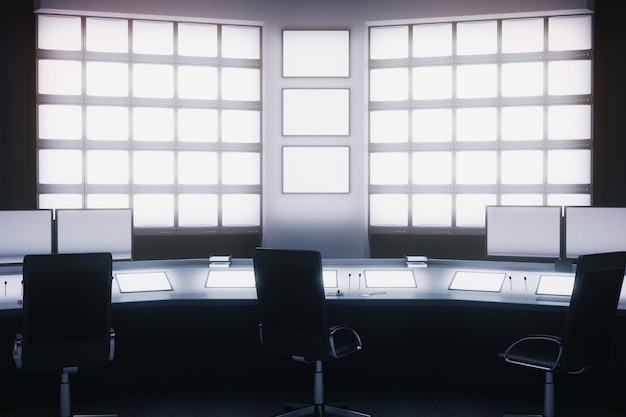In today’s fast-paced business world, creating a modern and functional workspace is essential for companies looking to stay ahead of the competition. One popular trend in office design is the incorporation of conference room glass walls, which provide a sleek and sophisticated aesthetic while promoting collaboration and transparency. This comprehensive guide will walk you through the process of building a glass conference room, from conducting a needs assessment and identifying objectives, to working with architects and contractors, selecting materials and furnishings, and overseeing installation and quality control.
Conducting a Needs Assessment and Identifying Objectives
Before embarking on the journey to build a glass conference room, it is crucial to conduct a thorough needs assessment to understand the specific requirements of the space. This will help you make informed decisions throughout the planning and execution stages, ensuring that the final product meets your company’s unique needs.
Determine the Purpose and Functionality
First and foremost, consider the primary purpose of the conference room. Will it be used primarily for internal meetings or client presentations? How many people will typically be attending meetings in the space? Identifying these factors will help you determine the size, layout, and technical requirements of the room.
Assess Space Constraints and Limitations
Next, evaluate the available space within your office to determine the best location for the conference room. Consider factors such as natural light, accessibility, and proximity to other important areas, such as restrooms or break rooms. It is also essential to assess any physical constraints, such as structural columns or low ceilings, that may impact the design and functionality of the space.
Identify Key Stakeholders and Gather Input
Finally, engage with key stakeholders, such as leadership, employees, and clients, to gather their input on the conference room’s design and functionality. This collaborative approach will help ensure that the final product meets the needs of all parties involved and promotes a positive and productive work environment.
Working with Architects and Contractors to Develop Plans
Once you’ve conducted a needs assessment and identified the project’s objectives, it’s time to bring in professional architects and contractors to help bring your vision to life. These experts will work with you to develop detailed plans and specifications for the conference room, ensuring that it meets your requirements and adheres to all relevant building codes and regulations.
Selecting the Right Team
Begin by researching and vetting potential architects and contractors with experience in designing and constructing glass conference rooms. Look for professionals with a proven track record and strong portfolio of previous work. It may also be helpful to seek recommendations from colleagues or industry peers who have completed similar projects.
Collaborating on the Design Process
Once you’ve assembled your team of professionals, work closely with them to develop a cohesive design plan that aligns with your objectives and vision. This may involve several iterations and revisions, as well as consultations with other specialists, such as lighting designers or audio-visual experts. It’s essential to maintain open lines of communication throughout this process to ensure that everyone is on the same page and that your needs and expectations are being met.
Approving the Final Plans
After the design process is complete, review the final plans and specifications carefully to ensure that they meet your requirements and adhere to all relevant building codes and regulations. Once you are satisfied with the design, obtain any necessary permits or approvals before proceeding with construction.
Coordinating with Vendors and Suppliers to Select Materials and Furnishings
With the design plans in place, it’s time to select the materials and furnishings that will bring your glass conference room to life. This process requires careful consideration and coordination with various vendors and suppliers to ensure that you are getting the best quality products at the most competitive prices.
Choosing the Right Glass
The most critical component of your conference room is, of course, the glass walls. Work with your architect and contractor to determine the appropriate type of glass for your specific needs, considering factors such as thickness, transparency, and acoustic performance. It’s also important to select a reputable supplier that can provide high-quality, durable glass that meets all relevant safety standards.
Selecting Furnishings and Accessories
In addition to the glass walls, you will also need to select furnishings and accessories that complement the design and functionality of the conference room. This may include conference training tables, chairs, storage units, and audio-visual equipment. Consider factors such as ergonomics, aesthetics, and durability when making your selections, and work with your architect or designer to ensure that they fit seamlessly within the space.
Coordinating Deliveries and Installation
Once you’ve selected your materials and furnishings, coordinate with your vendors and suppliers to schedule deliveries and installation. This may require careful planning and communication to ensure that everything arrives on time and in the correct order, allowing the construction process to proceed smoothly and efficiently.
Overseeing Installation and Ensuring Quality Control
The final stage in building your glass conference room involves overseeing the installation process and ensuring that all materials and furnishings are installed correctly and to the highest possible standard.
Managing the Construction Schedule
Work closely with your contractor to develop a construction schedule, outlining the sequence and duration of each task. Monitor progress throughout the installation process and address any unexpected delays or issues that may arise. Maintaining open lines of communication with your contractor and other team members is crucial to keeping the project on track and within budget.
In conclusion, building a glass conference room requires careful planning, collaboration, and attention to detail. By conducting a needs assessment, working with experienced professionals, selecting high-quality materials and furnishings, and overseeing the installation process, you can create a functional and visually stunning workspace that meets your company’s unique needs and promotes a positive and productive work environment.

